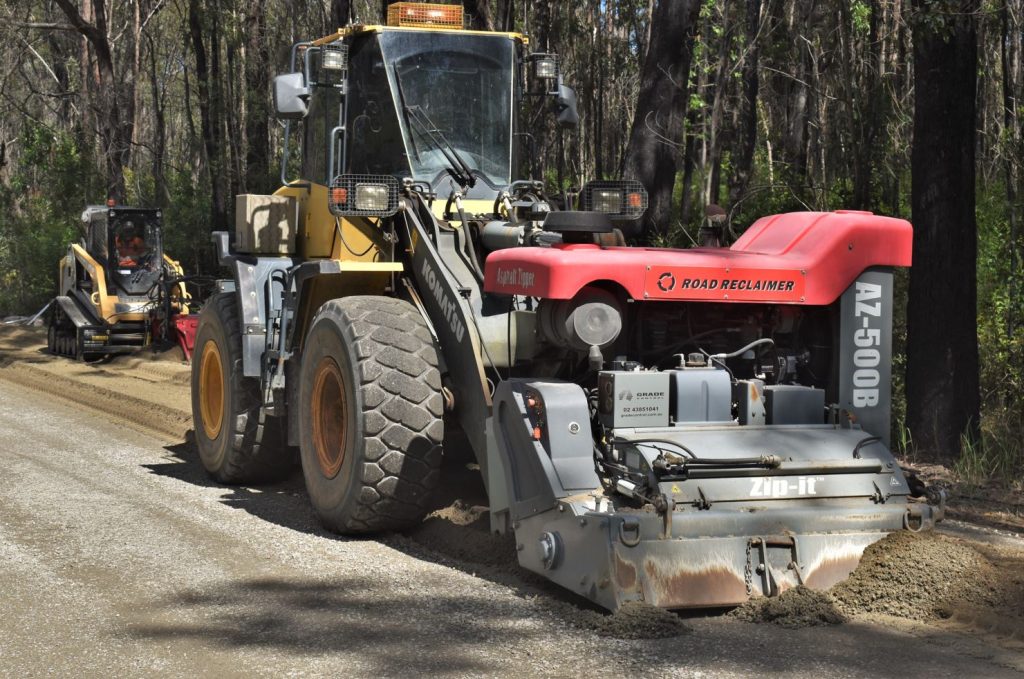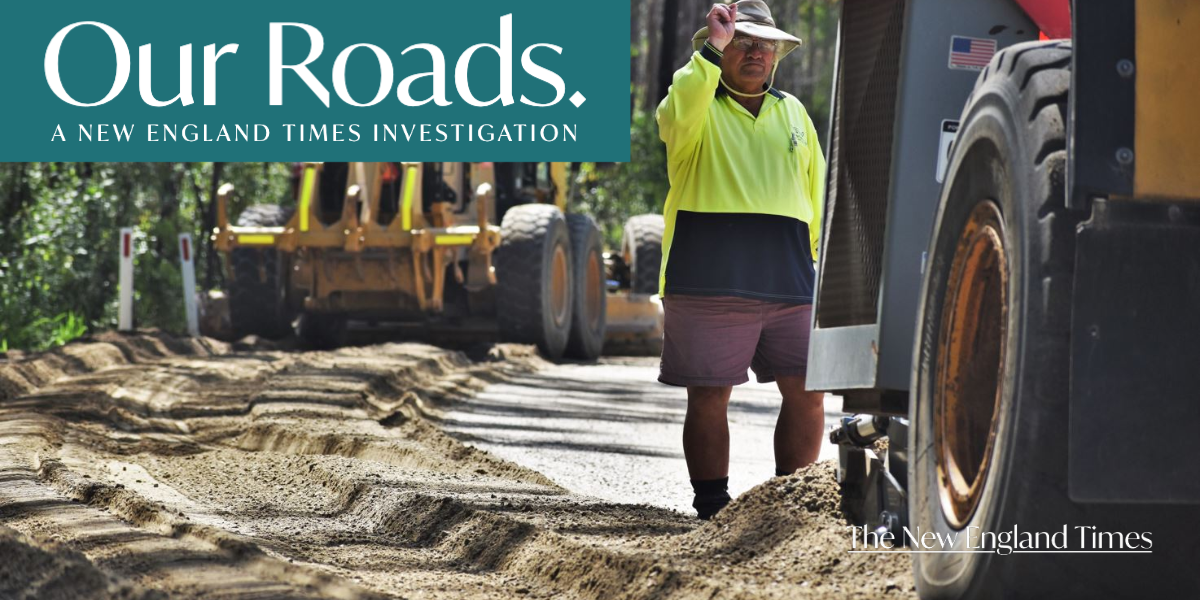This story is part of a three part investigation into the state of our roads. Read Part 1 here.
How do you fix the roads when there are so many that need repair, and not enough staff and equipment to do it all?
This is the question facing many local governments who have been affected by flooding the last couple of years, but the answer to the question depends a great deal on how the particular council is run.
Just as some councils have directly elected mayors and others do not, how the staff of each council is structured and how they choose to manage their assets and budget is unique to each council. There are some things that are controlled through guidelines or benchmarks set by the state government – for example, the rates peg – but by and large, councils are free to set their own sails.
Roads, rates and rubbish are the three R’s of local government. Conservative councils tend to stick closely to that, have minimal executive level staff, and focus their activities on essential service delivery and amenity. More progressive councils tend to have more executive staff and branch out into areas that are normally the domain of business or other levels of government, or divert resources to advocate on social issues such as climate change. And of course, there are lots of gradients in between.
Conservative councils will have little trouble ramping up their civil works team to cope with the increased demand. Most will supplement staff with contractors on the bigger and more complicated tasks. The more progressive councils who have been diverting ratepayer’s money to other things probably already use contractors for some road maintenance, as they typically have a smaller civil works team, and may struggle to get enough cash or enough contractors to get the work done.
That’s not to say that either approach is right or wrong; just an observation that, on balance, conservative councils will be better prepared for the job ahead of them. Very small councils will struggle regardless of their approach, resources, or funding.
The need for more workers and plant to deal with the massive road repair task has been recognised by the NSW Government, who deployed 200 Transport for NSW workers and heavy machinery to flood hit areas in the central and western parts of the state, in addition to providing over half a billion dollars in funding.
Moree Plains Shire Council is hopeful of getting some of that support but a spokesperson for the council says their ‘can-do’ team will get the job done either way.
“We have the equipment, like all regional Council’s we are facing staff shortages, however our current employees have high morale and a can-do attitude to get our network back to pre-flood, and rehabilitation works can commence with the use of external and internal staff.”
“Moree Plains Shire Council would support and be appreciative with any staff that have been deployed to aid with the local and regional road network by Transport for NSW,” a spokesperson for MPSC said.
Liverpool Plains Shire Council General Manager, Nathan Skelly, was also quietly confident they could get the job done.
“Council has the staff and equipment to undertake the work, however it is acknowledged that we do require the need of specialist contractors to augment our teams.”
“Historically we have been able to get these contractors, but expect it will be harder given the level of funding around,” Mr Skelly said.
Clarence Valley Council, which was similarly affected by extensive flooding, said they had already spent over $15 million and had 20 contractor crews in addition to their own staff working on road repair. This work included removing more than 35,000 tonnes – 3000 truckloads – of flood mud from the road corridor, clearing 65 landslips, and repairing more than 2000 defects (potholes, cracks and the like).

Tamworth Regional Council, which prides itself on keeping its roads up to a good standard, cautioned that repairs may take some time. Tamworth Regional Council Mayor Russell Webb said they are planning a broad range of maintenance activities and say they will be using a variety of local contractors to assist with the large program of repairs which will include pothole patching, clearing drainage structure, shoulder repairs to sealed roads and additional maintenance grading on unsealed roads.
“We have set the priorities for works based on where the safety needs are greatest,” he said. “We will be working as quickly as possible to repair damage to roads around our region.
“We have more than two thousand kilometres of local roads so it won’t be fixed overnight and we are asking our community to please understand that and be patient.”
Mayor of the smaller Walcha Council, Eric Noakes, said their resources are very stretched and, similar to Mayor Webb, that there would be a limit to how fast works can be undertaken.
“The challenges for Councils do not stop once funding has been received.”
“Shortages of contractors and seemingly ever-increasing costs of material such as road base makes delivery on time and on budget for a small Council like Walcha a constant challenge.”
“We are fortunate that we have a good team in Council who continually punch above their weight,” Mayor Noakes said.
One of the more conservative councils in the region, Inverell Shire Council, had no hesitation in saying they have the staff and plant necessary to get the job done, and said the announced $500 million in additional roads funding would allow them to keep their resources working on the roads.
“Council’s employees and plant are used on a variety of tasks. This funding will allow these resources to be retained on road maintenance and repair activities, rather than being utilised on other projects.”
“Also, Council has ‘regular’ contractors that are utilised to supplement Council’s resources on road activities. This funding will provide more work for the private contractors utilised by Council,” the spokesperson for Inverell Shire Council said.
Most Councils do have regular construction contractors that they work with. More conservative councils will use contractors for major development or works that require specialist engineering or capability but do all the ongoing maintenance themselves; more progressive councils will often use contractors for all kinds of works including regular ongoing maintenance.
For example, Uralla Council said they are preparing themselves to perform works in house so as not to be over-reliant on contractors. By contrast, Glen Innes Severn Shire Council plans to utilise a mix of internal resources, local and external contractors. Armidale Regional Council, well known for its foray into social issue advocacy and other non-traditional council activities, did not respond to inquiries from The New England Times by deadline, but is believed to be one of the biggest users of contractors in the region, relative to size of the road network.
Mayor Leo Hauville of Kempsey Shire Council said they need help to repair the critically enabling infrastructure of the local and regional road network, but the help required is mostly funding.
“We are facing a task that is beyond the reasonable scope of any local government authority.”
In the third and final part of this investigative series, we will look at how the money works: grants, the role of Transport for NSW, and how fast money can be moved to make the work happen.
Top image: Clarence Valley Council road works in progress (supplied)
Got something you want to say about this story? Have your say on our opinion and comment hub, New England Times Engage


